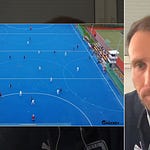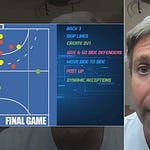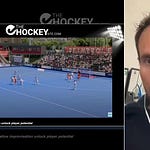Wether you’re coaching a team in business or in sports we all know in an ideal situation – if we manage team dynamics – a team is more than the sum of its individuals. But for that to happen the coach needs to understand the individuals in his or her team and the individuals need to understand each other.
Luminalearning.com is a global specialist transforming organisations by celebrating people, one human at a time. They design and deliver cutting-edge products based on their integrated suite of digital psychometric resources to offer innovative personalised selection and development solutions for individuals, teams and organisations. The lessons from corporate life have been applied to teams in sports as well as vice versa by Theo ten Hagen.
Theo ten Hagen
Theo ten Hagen is a Lumina Learning partner from the Netherlands with a lot of love for the game of hockey and… a lot of experience transforming groups of individual players into a team. He will talk to us about what is behind the colours used to help visualise people profiles in your team and much more.
The One Lesson for Coaches – Alignment on Goals
If you could take away only one core insight from this masterclass on team dynamics, let it be this: the absolute necessity of goal alignment within your field hockey team. Whether you’re coaching international athletes or a local club side, getting every player, every member of staff, fully synchronized on the objective for the season is the critical starting point for success. This goes beyond the obvious—winning matches or reaching playoffs—it demands that everyone is genuinely pointed in the same direction for reasons that matter to them.
As Theo ten Hagen put it, “The most important thing I discovered the last 20 years is that alignment of the goal is the most important thing. It starts with alignment. Is everybody aligned on the goal which you want to achieve? That’s the most important thing.” This isn’t trivial; your squad might include players mainly for the social aspect (“just nice to play hockey on Sunday and have a beer”), whilst others are there for personal development or making the national side. If these motives aren’t openly discussed and genuinely aligned—if every person doesn’t understand and buy into the shared goal—you’ll see it in fragmented effort on game day, lost momentum during adversity, and missed opportunities for team feedback and growth.
How should you implement this in your daily coaching practice?
Start Early: Use the preseason or the very start of training cycles to openly discuss and set goals. This isn’t just for the players—include the staff, medical team, and managers, too.
Create Space for Honest Dialogue: Don’t simply dictate the goal. Facilitate a dialogue, ask what motivates each athlete and staff member, and get everyone to openly agree on the target.
Write It Down and Revisit: Once the alignment is established, formalize it in a simple team charter or mission statement. Revisit this regularly—mid-season, after setbacks, and before crucial games.
Link Rules to Goals: As
Theo ten Hagen
explains, when players construct and align on their own team rules and behaviors, giving and receiving feedback becomes more constructive and less personal: “If the rules are set, then it’s much more easier to give each other feedback if people don’t follow up the rules. Because you created these rules to achieve the goal.”
Feedback Is Easier When Aligned: Athletes are receptive to constructive criticism when it clearly serves the agreed goal rather than the whims of coaches or teammates.
This alignment doesn’t mean ignoring individual ambitions; it means harmonizing those ambitions within the broader team framework. When everyone’s rowing in the same direction, even the inevitable stresses and failures (“fail, but fail better,” as Theo ten Hagen phrases it) become growth opportunities, not sources of division.
Why You Should Watch This Masterclass
What’s unique in this workshop isn’t just the practical psychology but how seamlessly these insights apply to the lived reality of running a hockey program. If you care about making the leap from mediocre results (good teams not achieving their potential) to transformational team culture—where feedback is honest, stress is managed constructively, and team chemistry survives the pressure cooker of playoffs—the full video will be worth your time.
Plus, there’s much more on personality profiling, feedback techniques, stress management, and the subtle art of getting your squad’s introverts and extroverts to thrive together. Read on ↓ for a deep dive in the second half of this newsletter for our paid subscribers.Listen to this episode with a 7-day free trial
Subscribe to The Hockey Site to listen to this post and get 7 days of free access to the full post archives.














